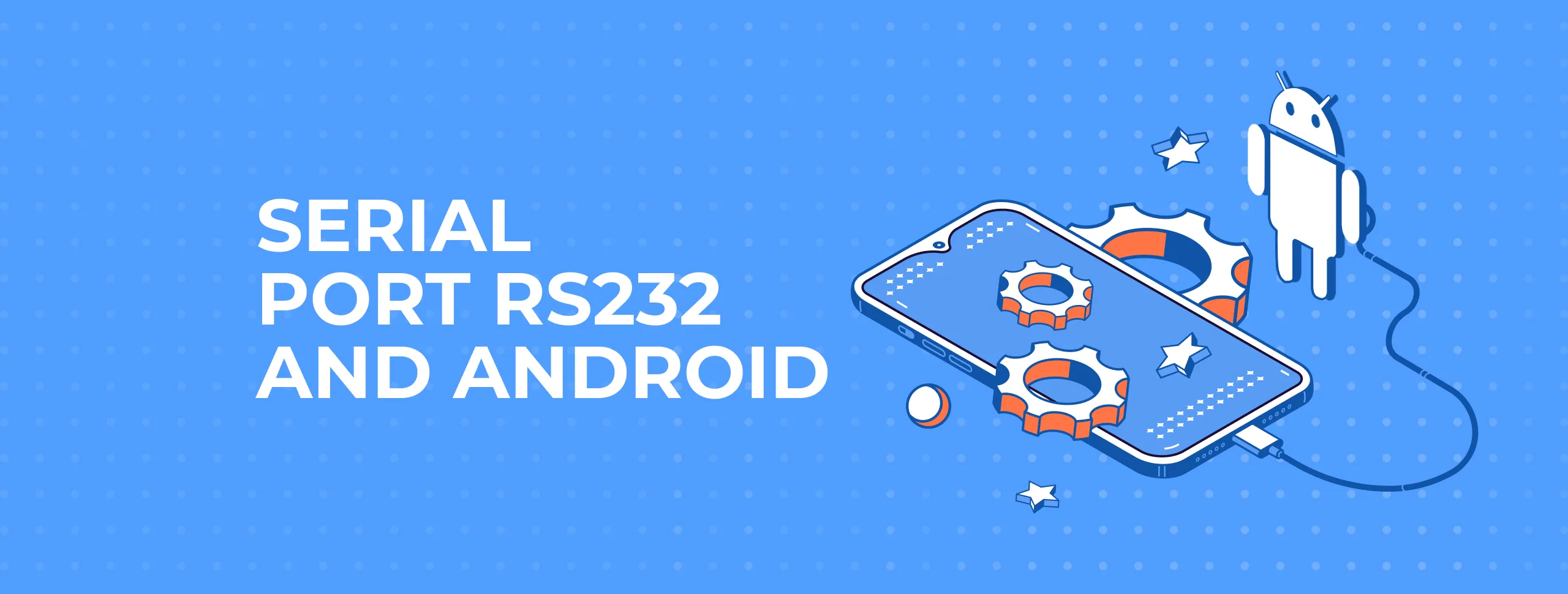
Serial Port RS232 and ANDROID

Understanding RS232
RS232 (Recommended Standard 232) is a standard for serial communication that defines the electrical characteristics and timing of signals, as well as the physical size and pinout of connectors. Historically, RS232 has been widely used to connect computers and peripheral devices, such as modems, printers, and sensors.
Key Features of RS232:
- Signal Levels: RS232 uses voltage levels to represent binary data, typically -12V for a logical “1” and +12V for a logical “0”.
- Distance: It supports communication over distances up to 50 feet (15 meters), although the actual distance can vary depending on the data rate.
- Data Transmission: RS232 supports data rates ranging from 300 bps to 115200 bps or more, depending on the specific implementation.
- Connectors: The standard typically uses DB9 or DB25 connectors, making it compatible with a wide range of devices.
Despite its age, RS232 remains relevant in many industrial applications where robustness and reliability are paramount.
Integrating RS232 with Android
With the rise of Android devices, developers have found ways to interface these modern gadgets with RS232 devices, enabling new functionalities and extending the life of existing hardware. Here’s how to establish communication between Android devices and RS232 ports.
1. Using USB-to-RS232 Adapters
One of the most common methods to connect an Android device to an RS232 port is through a USB-to-RS232 adapter. These adapters allow Android devices to communicate with RS232 devices over USB, a standard supported by almost all modern Android smartphones and tablets.
Steps to Use a USB-to-RS232 Adapter:
- Choose the Right Adapter: Ensure the adapter is compatible with Android and supports the necessary baud rates.
- Connect the Adapter: Plug the RS232 end into your device and the USB end into the Android device.
- Install Necessary Drivers: Some adapters may require specific drivers to function correctly on Android. Ensure you have these installed.
- Use a Serial Communication Library: Libraries like Android-SerialPort-API can facilitate serial communication in your Android app.
2. Bluetooth Serial Communication
Another popular method is using Bluetooth to create a wireless connection to RS232 devices. Many industrial devices equipped with RS232 interfaces now offer Bluetooth connectivity.
Steps to Implement Bluetooth Serial Communication:
- Pair the Devices: Ensure that your RS232 device with Bluetooth is paired with the Android device.
- Use a Bluetooth Library: Implement a Bluetooth library (such as Android’s built-in Bluetooth API or a third-party library) to manage connections and data transfer.
- Read and Write Data: Use the library’s methods to read from and write to the RS232 device.
3. Wi-Fi Serial Communication
For environments where Bluetooth is not feasible, using Wi-Fi can be an effective alternative. RS232-to-Wi-Fi converters are available that allow RS232 devices to connect to local Wi-Fi networks.
Steps for Wi-Fi Integration:
- Set Up the Converter: Connect your RS232 device to the Wi-Fi converter and configure it to connect to your network.
- Develop the Android App: Create an app that connects to the IP address of the converter, using standard TCP/IP sockets for communication.
Use Cases
Integrating RS232 with Android can unlock various use cases, such as:
- Industrial Automation: Android devices can act as mobile terminals for monitoring and controlling industrial equipment.
- Healthcare: Medical devices with RS232 ports can transmit patient data to Android-based applications for real-time monitoring and analysis.
- Telecommunications: Network management and configuration can be handled via Android devices communicating with RS232 network equipment.





